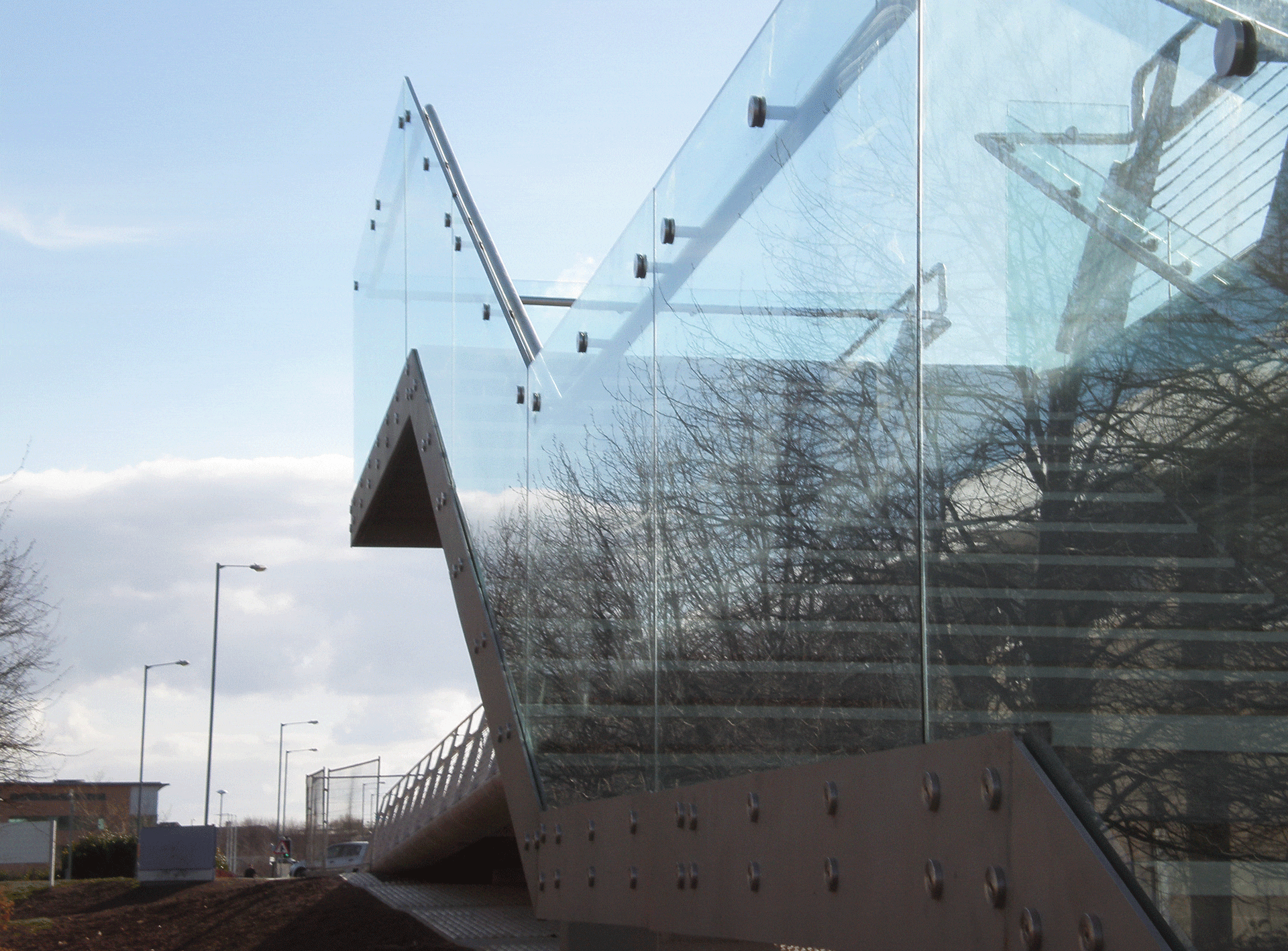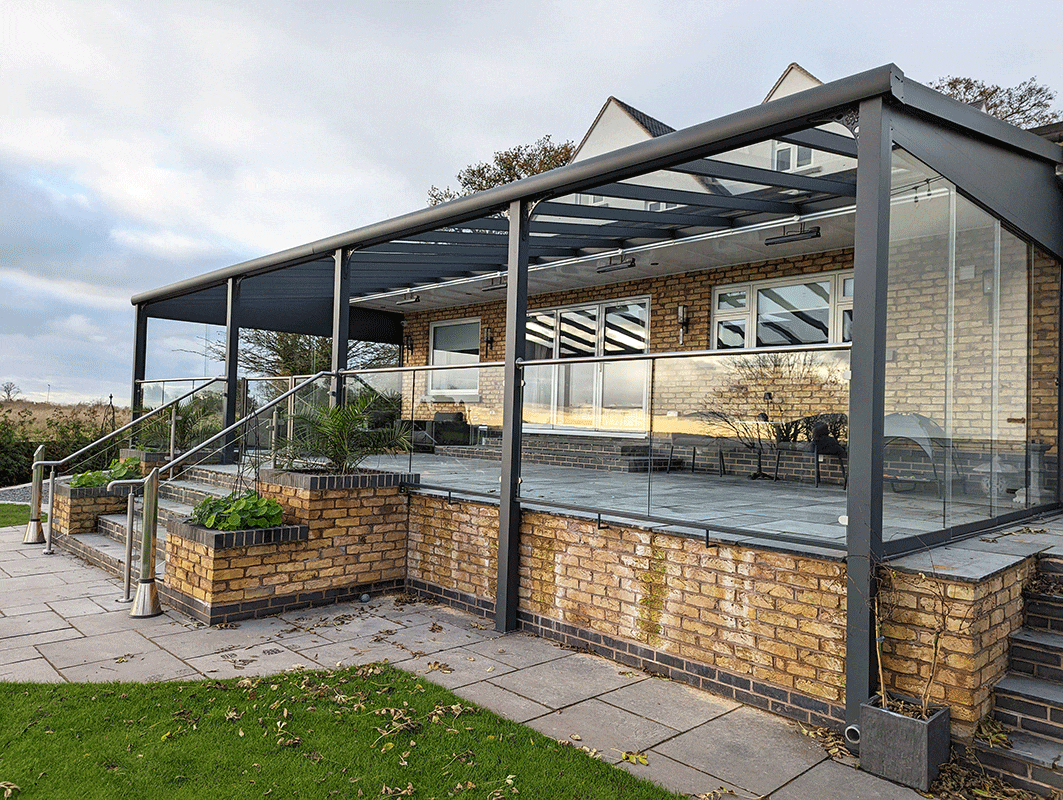Glass Balustrade Safety Regulations in the UK Explained
Balconies, verandas, and staircases are common functional features of residential and commercial buildings, but they must conform to regulation standards. Standards protect people from injuries and companies from litigation. Glass balustrades need to conform to standard regulations in the UK; they must be tested for load-bearing weight and be the correct height. In this blog post we'll give you a rundown of the glass balustrade safety regulations you should be aware of.
Key Takeaways: Glass Balustrades
- A glass balustrade is used for raised platforms and staircases and at height areas that require a safety barrier
- Glass balustrades are made using toughened or tempered glass.
- UK building regulations take into account the strength and height of balustrades.
- Balustrade handrails are optional, depending on the strength and reliability of the glass.
When are Balustrades Required?
Whether it is a staircase, a veranda, or a balcony in a home or commercial space, it needs to be safe. The best way to align with health and safety regulations is to use a balustrade or railing of some kind. There are many styles and designs available to ensure there is always fit with the interior decoration or style of the property.
A balustrade is needed if you have a change in the floor level of more than 380 mm or when a staircase has more than two risers - this is the vertical space between the steps. The UK has some of the strictest building regulations, so it's worth checking your building if you have doubts.

The Glass Required for a Balustrade
Glass balustrades are elegant. There are many different types of glass options depending on the style of the balustrade and the requirements of the building. Typical glass used in balustrades includes tempered glass, toughened glass, and heat-strengthened glass. Balustrade glass differs in its impact resistance, manufacturing, and breaking vulnerability.
How Thick Should Glass Balustrades Be?
Glass balustrades seem unsafe to some people, especially people with height fears. However, the glass in a glass balustrade is very secure and conforms to strict regulatory standards in the UK. Depending on the type of balustrade system used and whether it's for commercial or domestic purposes, a glass balustrade should be made from a minimum thickness of 10 mm of toughened glass through to 22mm toughened and laminated glass, Handrails are needed in residential homes.
What are the Load Requirements of Glass Balustrades?
In order to support safety requirements, glass balustrades need to adhere to load requirements. Load requirements are measured horizontally and vertically and on the handrail; they show how much weight can be placed on the balustrade for every metre of glass. Tempered glass is always strong, but it also needs to be tested for point load and distributed load before it's safe.
What Height Should Glass Balustrades Be?
Whether a glass balustrade is installed in a residential or commercial property, it needs to be the correct height for the building. Height restrictions are needed to ensure the balustrade supplies the correct strength for the building and protects users. When it comes to internal balustrades in theatres and spaces for public assembly, the height can depend on factors like seating distance.
Commercial Height Regulations
Commercial buildings have tight restrictions on the height of glass balustrades in the UK. For factories and warehouses, it's recommended that glass balustrades have a minimum height of 900mm for stairs and ramps, and 1100mm for landings and floors.
However, buildings used for public assembly have slightly different requirements; balustrades should be 530mm or less in theatres and 800mm elsewhere.
Residential Height Regulations
Commercial buildings have tight regulations, but it's important that residential properties also meet building regulations. In the UK, glass balustrades for residential properties need to be a certain height determined by the location of the property. External glass balustrades should be 1100mm in height; internal balustrades should be 900mm and 800mm near a window opening.
Glass balustrades are an elegant and safe way to enhance a residential or commercial building. If you intend to install or update an existing glass balustrade, it needs to be tested for strength and cut to fit the height of the raised space. Continuous handrails are optional features for them.
At Arc Metal, we take the complexity and worry out of choosing the best glass balustrade for your business or residential property. Whatever you need, you can have peace of mind with Arc Metal, knowing that all products adhere to UK regulations. Get in touch to receive a quote today.
Glass Balustrade Design Requirements
Glass balustrades are designed to look elegant and beautiful in residential and commercial properties, but their main function is for health and safety. Whether it's on a balcony, a staircase, or a veranda, a glass balustrade must be designed correctly and be properly tested.
Glass balustrades are tested in two ways: they are tested for the load-bearing capacity in the mid-section of the balustrade, such as someone leaning against it, and for their ability to bear an impact force when somebody is suddenly pushed against it. The tests confirm the glass is safe.
The Regulations for Frameless Glass Balustrades
There is nothing more beautiful and elegant than a frameless glass balustrade. These designs are ideal for balconies and verandas that need a safe but elegant way to protect people using the building. In the UK, there are strict regulations for frameless balustrades in all building types.
Regulations for frameless glass balustrades focus on height and load-bearing strength. Without a steel frame to support the tempered glass, the balustrade must be tested to regulation standards before installation. Glass frameless balustrades should be made from a minimum of 17mmmm tempered glass and a height that is relative to the drop internally or externally as well.
Do Glass Balustrades Require a Continuous Handrail?
The short answer is no. Glass balustrades don't require a continuous handrail as long as they are made with the correct strength of tempered glass, and they are unlikely to fail. In this case, glass frameless balustrades do not require a continuous handrail and can support many loads.
However, regulations suggest that some glass balustrades could potentially fail and would require a continuous handrail to support vulnerable panels. The best way to prevent panels from failing is to use glass with a strong interlayer and have them tested to regulation standards.
Conclusion
Glass balustrades are an elegant and safe way to enhance a residential or commercial building. If you intend to install or update an existing glass balustrade, it needs to be tested for strength and cut to fit the height of the raised space. Continuous handrails are optional features for them.
At Arc Metal, we take the complexity and worry out of choosing the best glass balustrade for your business or residential property. Whatever you need, you can have peace of mind with Arc Metal, knowing that all products adhere to UK regulations. Get in touch to receive a quote today.

Need more information?
To see how ARC could support your next project – simply call us, or use the form below.